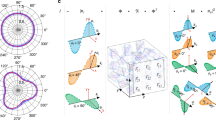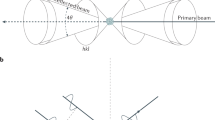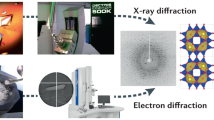Abstract
ALTHOUGH it provides an elegant and accurate means of determining crystal lattice parameters, the back-reflexion Weissenberg method has not been widely used since it was first proposed in 1937 1,2. Originally a special camera was built for taking back-reflexion Weissenberg photographs, and it is presumably the lack of this instrument in most crystallographic laboratories that accounts for the neglect of the method. However, a special camera is not necessary as an ordinary (and widely available) front-reflexion Weissenberg camera can be easily converted into a back-reflexion instrument. The method of conversion described below applies specifically to front-reflexion Weissenberg cameras of the type described by Buerger2, and may require modification before it can be applied to other designs.
This is a preview of subscription content, access via your institution
Access options
Subscribe to this journal
Receive 51 print issues and online access
$199.00 per year
only $3.90 per issue
Buy this article
- Purchase on Springer Link
- Instant access to full article PDF
Prices may be subject to local taxes which are calculated during checkout
Similar content being viewed by others
References
Buerger, M. J., Z. Krist., A, 97, 433 (1937).
Buerger, M. J., “X-Ray Crystallography” (John Wiley and Sons, Inc., New York, 1942).
Author information
Authors and Affiliations
Rights and permissions
About this article
Cite this article
HERBSTEIN, F. Precision Determination of Cell Dimensions by the Back-Reflexion Weissenberg Method. Nature 180, 291–292 (1957). https://doi.org/10.1038/180291b0
Issue Date:
DOI: https://doi.org/10.1038/180291b0
Comments
By submitting a comment you agree to abide by our Terms and Community Guidelines. If you find something abusive or that does not comply with our terms or guidelines please flag it as inappropriate.



